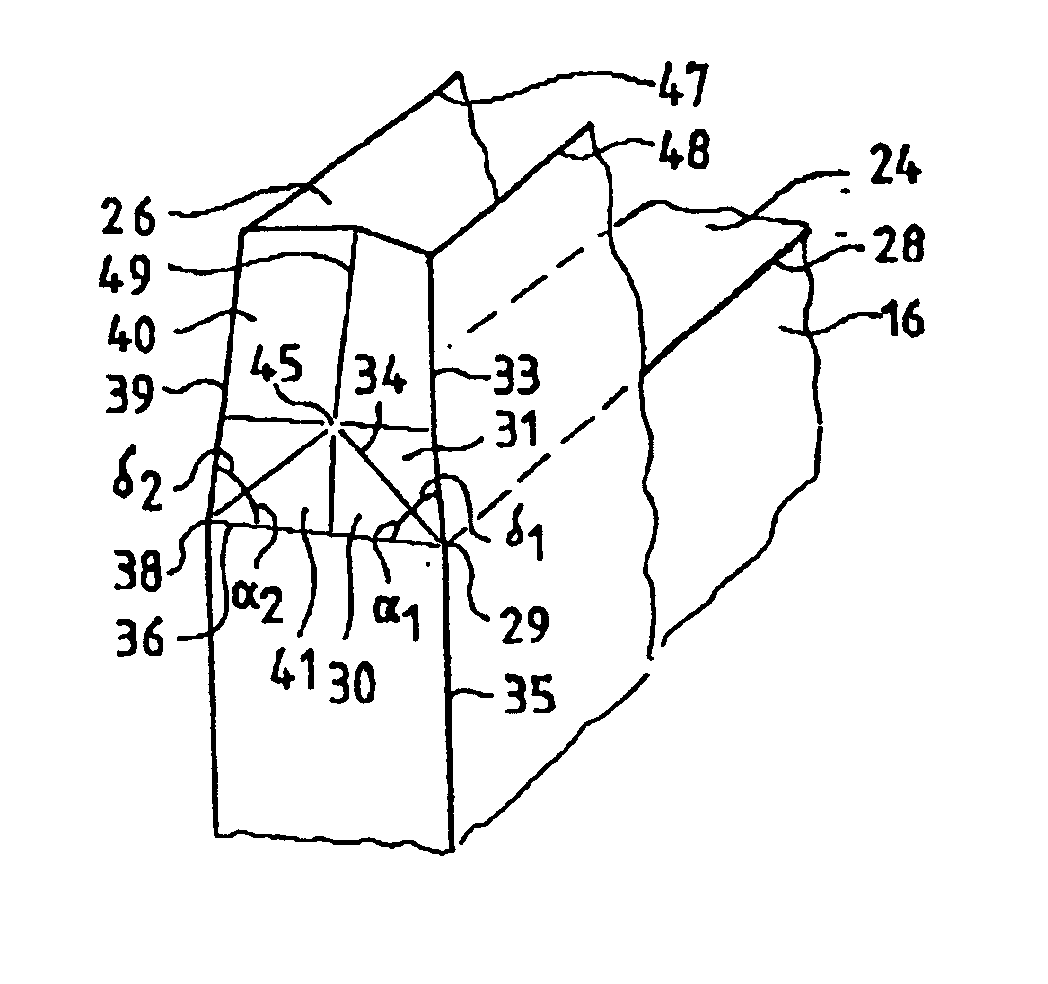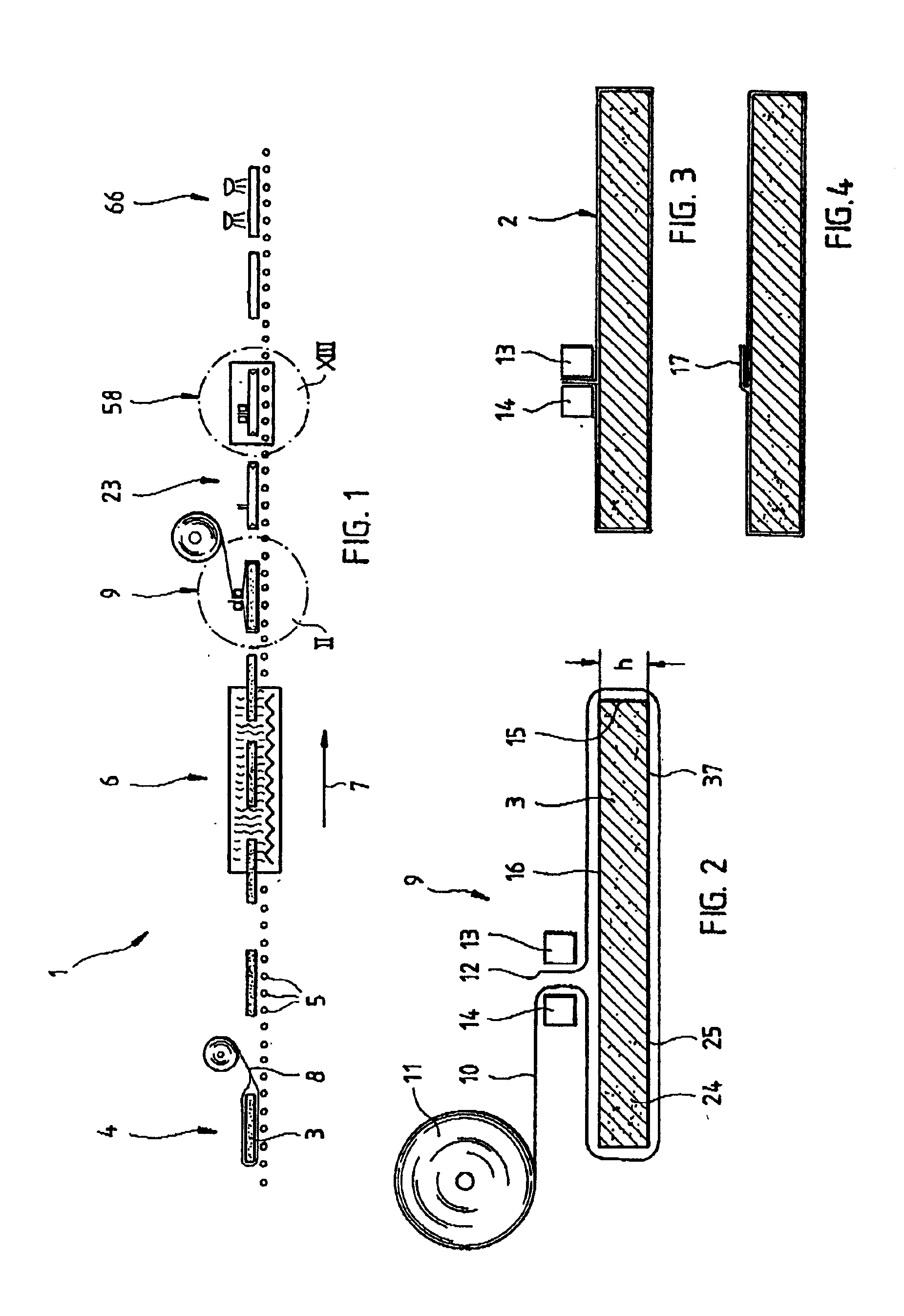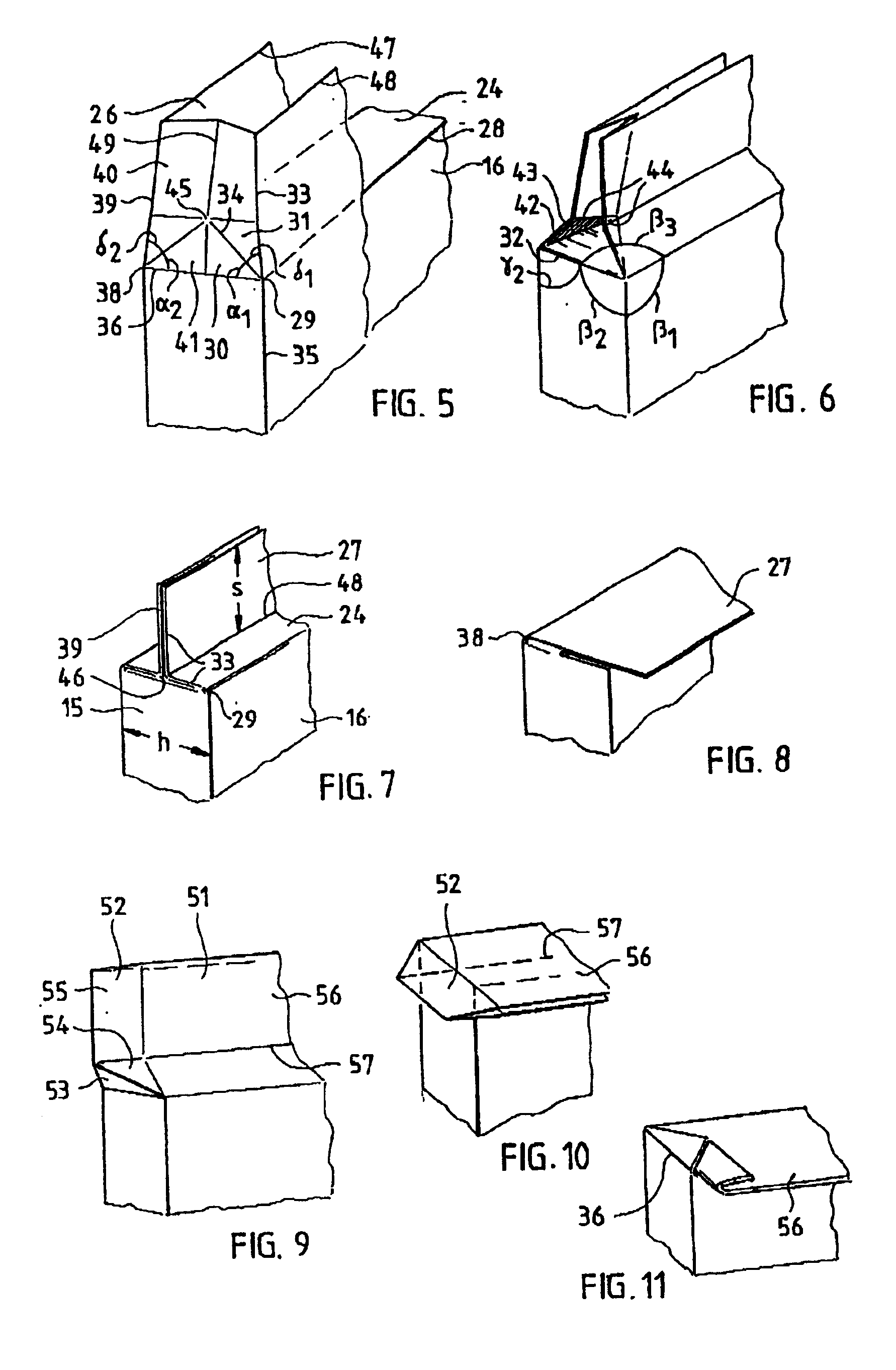Foil-enveloped evacuated thermal insulation elements
a technology of thermal insulation elements and foils, which is applied in the direction of pipe protection by thermal insulation, packaging, building components, etc., can solve the problems of premature reduction of thermal insulation properties to levels, increased stress on foils, and reduced internal vacuum li
- Summary
- Abstract
- Description
- Claims
- Application Information
AI Technical Summary
Benefits of technology
Problems solved by technology
Method used
Image
Examples
Embodiment Construction
FIG. 1 shows a schematic view of a production line for the manufacture of thermal insulation elements 2 of the panel-formed shape shown in plan view in FIG. 14 for example, in accordance with the invented process.
Not shown is a forming process in which a core 3 is pressed from a powder, e.g. pyrogenic silicic acid, or foamed from a plastic, for example polystyrene or polyurethane. This blank core can already have the desired form of the thermal insulation element 2 which is to be manufactured or can be further processed for this purpose, e.g. by sawing or cutting. The blank cores should correspond as exactly as possible to the desired form of the final thermal insulation element 2, although a shrinkage during the evacuation phase on the order of around 5% can be compensated by means of corresponding overdimensioning.
The blank cores 3 are taken from an intermediate store and first enveloped in a felt in a first processing station 4. This has the function of holding back any particles...
PUM
| Property | Measurement | Unit |
|---|---|---|
| Area | aaaaa | aaaaa |
| Thermal properties | aaaaa | aaaaa |
Abstract
Description
Claims
Application Information
 Login to View More
Login to View More - R&D
- Intellectual Property
- Life Sciences
- Materials
- Tech Scout
- Unparalleled Data Quality
- Higher Quality Content
- 60% Fewer Hallucinations
Browse by: Latest US Patents, China's latest patents, Technical Efficacy Thesaurus, Application Domain, Technology Topic, Popular Technical Reports.
© 2025 PatSnap. All rights reserved.Legal|Privacy policy|Modern Slavery Act Transparency Statement|Sitemap|About US| Contact US: help@patsnap.com



